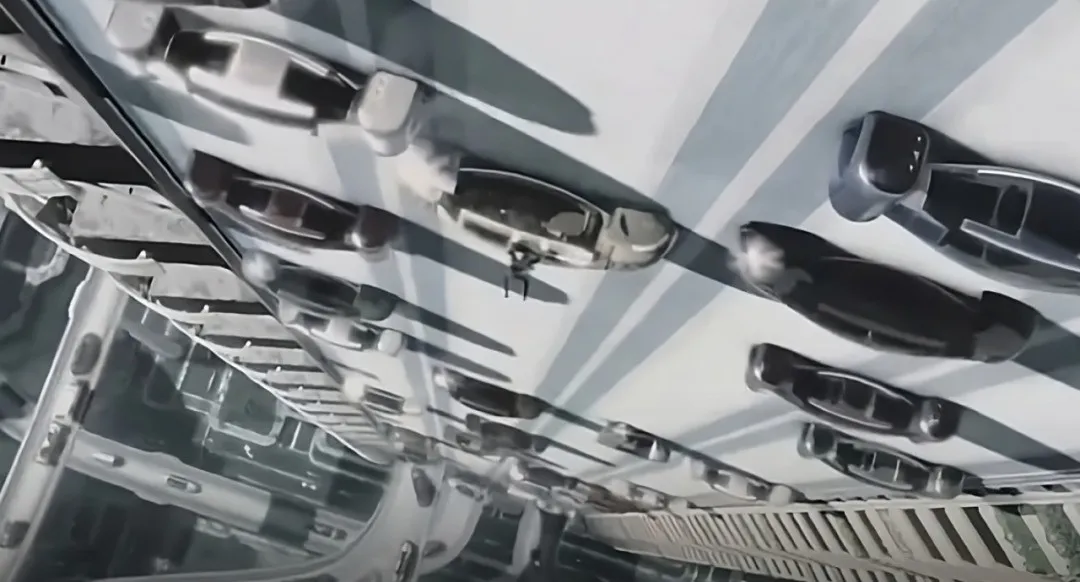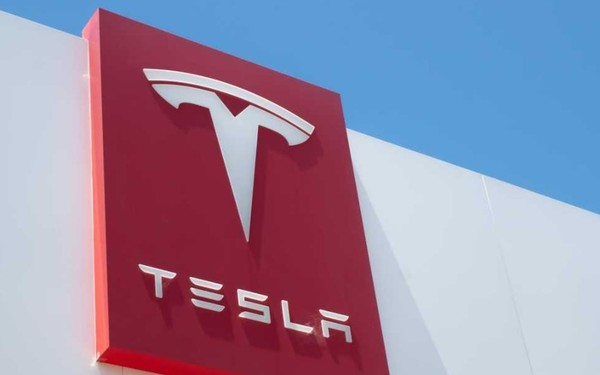The bold gamble after Tesla's massive layoffs: How was FSD v12 born?

The sustained investment during the last difficult period has become Tesla's weapon in dealing with this challenging time. Layoffs of more than 10,000 people, significant downsizing of key projects such as the 4680 battery team, and the departure of senior executives in charge of the three major electrical systems... The major adjustments initiated by Tesla CEO Elon Musk on April 15th are just a prelude.
上一次艰难时期的持续投入,成为特斯拉应对这一次艰难时期的武器。 裁员 1 万多人、大幅缩减重要项目 4680 电池团队、负责三电系统的高级副总裁等高管离职……特斯拉 CEO 埃隆·马斯克在 4 月 15 日发起的大调整,只是一个序幕。
In the following half month, Tesla continued to disband former key projects: the 4680 battery project continued to lay off staff, the North American Supercharger team was completely dissolved, and the project of more than 9,000 tons of integrated die-casting machine was halted, with a large number of senior executives leaving. In June, Tesla will also lay off more than 6,000 people in California and Texas.
之后半个月,特斯拉持续裁撤曾经的重点项目:4680 电池项目继续裁员、北美的超级充电桩团队完全解散、9000 吨以上一体压铸机项目被叫停,相关高管大批离职。接下来的 6 月,特斯拉还会在加州和得州两地裁员超过 6000 人。
Musk's new bet is on full self-driving. The unmanned taxi (Robotaxi) project has been given the highest priority. Musk announced that the product will be released on August 8th, and this year, tens of billions of dollars will be invested in purchasing GPUs and developing vehicle-mounted chips for improving the self-driving system. He has said many times that as long as this system continues to iterate, it will achieve unmanned driving and make Tesla a company with a market value of 10 trillion US dollars.
马斯克的新赌注是全自动驾驶。无人出租车(Robotaxi)项目被拔到最高优先级。马斯克宣布将在 8 月 8 日发布产品,今年投入百亿美元采购 GPU、研发车载芯片,用于改进自动驾驶系统。他曾多次说过,只要持续迭代这套系统,就会实现无人驾驶,让特斯拉成为 10 万亿美元市值公司。
In China, Tesla's second-largest market, Musk also hopes to turn the tables with this system. At the end of April, Musk visited China and was received by government leaders. Soon after, he said in an internal letter that Tesla has obtained permission to test some assisted driving systems in China.
在特斯拉的第二大市场中国,马斯克也期望用这套系统翻盘。4 月底,马斯克到访中国,被政府领导接见。不久后,他在内部信中说,特斯拉已在中国获得测试部分辅助驾驶系统的许可。
The FSD v12 self-driving system, which began to be widely pushed this year, does show some unusual potential. The feedback from car owners is very close: "It's like driving by a person," compared with the previous generation, there has been progress, and it is more calm and composed in narrow road meetings and overtaking.
今年开始大面积推送的 FSD v12 自动驾驶系统确实展现出一些不同寻常的潜力。车主的反馈都很接近:“就像人开车一样”,跟上一代相比有进步,狭路会车、超车更从容。
Tesla's FSD v12 calmly deals with complex road conditions.
特斯拉 FSD v12 从容应对复杂路况。
Zhou Guang, CEO of the autonomous driving company Yuan Rong Qi Xing, admitted after experiencing FSD v12 in the United States in March this year that he still underestimated its capabilities: "Before going, I thought it might be something at 80 points, but it actually achieved 90 points."
自动驾驶公司元戎启行 CEO 周光今年 3 月在美国体验 FSD v12 后,承认还是低估了它的能力:“去之前我认为可能是 80 分的东西,但实际做到了 90 分。”
A person in charge of a domestic first-line new energy company believes that Tesla's self-driving will have a revolutionary breakthrough after experiencing it. Competitors dare not miss it. Around the Beijing Auto Show at the end of April, companies such as Xiaopeng, Huawei, Great Wall, and SenseTime announced that they would launch self-driving systems similar to FSD v12. At the same time, SoftBank, Nvidia, and Microsoft invested $1.08 billion in the British self-driving company Wayve, which has the same route as Tesla.
一家国内一线新能源企业负责人体验后相信,特斯拉的自动驾驶会有革命性突破。竞争对手们不敢错过,仅 4 月底北京车展前后,小鹏、华为、长城、商汤绝影等公司宣布将推出类似 FSD v12 的自动驾驶系统。同期,软银、英伟达和微软用 10.8 亿美元投资与特斯拉路线相同的英国自动驾驶公司 Wayve。
Following Tesla's route, a new self-driving competition is about to start. This time, it is not only a technical problem to be solved but also a resource competition. On the day of coming to China, Musk outlined the entry threshold on social media: "Any company, if the computing power investment does not reach tens of billions of dollars... it cannot participate in this round of competition."
沿着特斯拉的路线,一场新的自动驾驶竞赛正在开启。这一次不只要解决技术难题,还是一场资源竞赛。来中国当天,马斯克在社交媒体上划出入局门槛:“任何公司,如果算力投入达不到百亿美元 ...... 就无法参与这一轮竞争。”
In the 2000s, the three unmanned vehicle challenges held by DARPA in the desert were the source of modern unmanned driving technology research and development. Google recruited the winners and found a feasible plan, breaking down autonomous driving into multiple segments:
2000 年代,DARPA 在沙漠中举办的 3 场无人车挑战赛,是现代无人驾驶技术研发的源头。Google 招揽了优胜者,趟出一条可行的方案,将自动驾驶拆成多个环节:
Use lidar, cameras, and other sensors to collect environmental data around the vehicle and hand it over to the model trained by artificially labeled data to identify common important targets and various obstacles (perception module), and then combine it with high-precision maps to let the system understand how the road will change, and finally rely on the rules written by engineers with code to decide how the car should be driven (prediction, planning module).
用激光雷达、摄像头等传感器收集车辆周围环境数据,交给依赖人工标注数据训练出的模型,识别出常见的重要目标和各种障碍物(感知模块),再配合高精地图,让系统了解道路会怎么变化,最后依赖工程师用代码写成的规则决定车怎么开(预测、规划模块)。
At first, Tesla also followed the path opened by Google to develop autonomous driving, in order to save costs and quickly expand the scope of use, they developed a plan that depends on cameras instead of expensive lidar and high-precision maps. Before the launch of v12, the workflow of Tesla's self-driving system was roughly:
最初,特斯拉也按照 Google 开辟的路径去做自动驾驶,为了节省成本和迅速扩大使用范围,他们开发依赖摄像头,而不是昂贵的激光雷达和高精地图的方案。推出 v12 前,特斯拉的自动驾驶系统工作流程大概是:
In order to deal with all kinds of situations encountered on the road as much as possible, hundreds of Tesla engineers wrote 300,000 lines of C++ code to formulate rules - equivalent to 1.7 times the code amount of the early Linux operating system.
为了尽可能应对路上遇到的各种情况,特斯拉数百名工程师写了 30 万行 C++ 代码制定规则——相当于早期 Linux 操作系统代码量的 1.7 倍。
This is not the way people learn to drive. People do not need to identify what a large number of objects that may appear on the road are, nor do they need to formulate various rules in advance for each complex scene in order to drive on the road.
这不是人学会开车的方式,人不需要认出一条路上可能出现的大量物体到底是什么,也不需要为每个复杂场景提前制定各种规则,就能开车上路。
Such a self-driving system is difficult to ensure absolute safety. The real world is ever-changing, and no matter how many engineers, it is difficult to exhaust. The current commercial unmanned taxis can only operate in limited areas, and there are no safety officers in the car
这样做出来的自动驾驶系统,很难保证绝对安全。真实世界千变万化,再多的工程师也难以穷尽。现在商业化的无人出租车,只能在有限区域运营,车内没有安全员,只不过是运营方把他们转移到云端,远程盯着。


